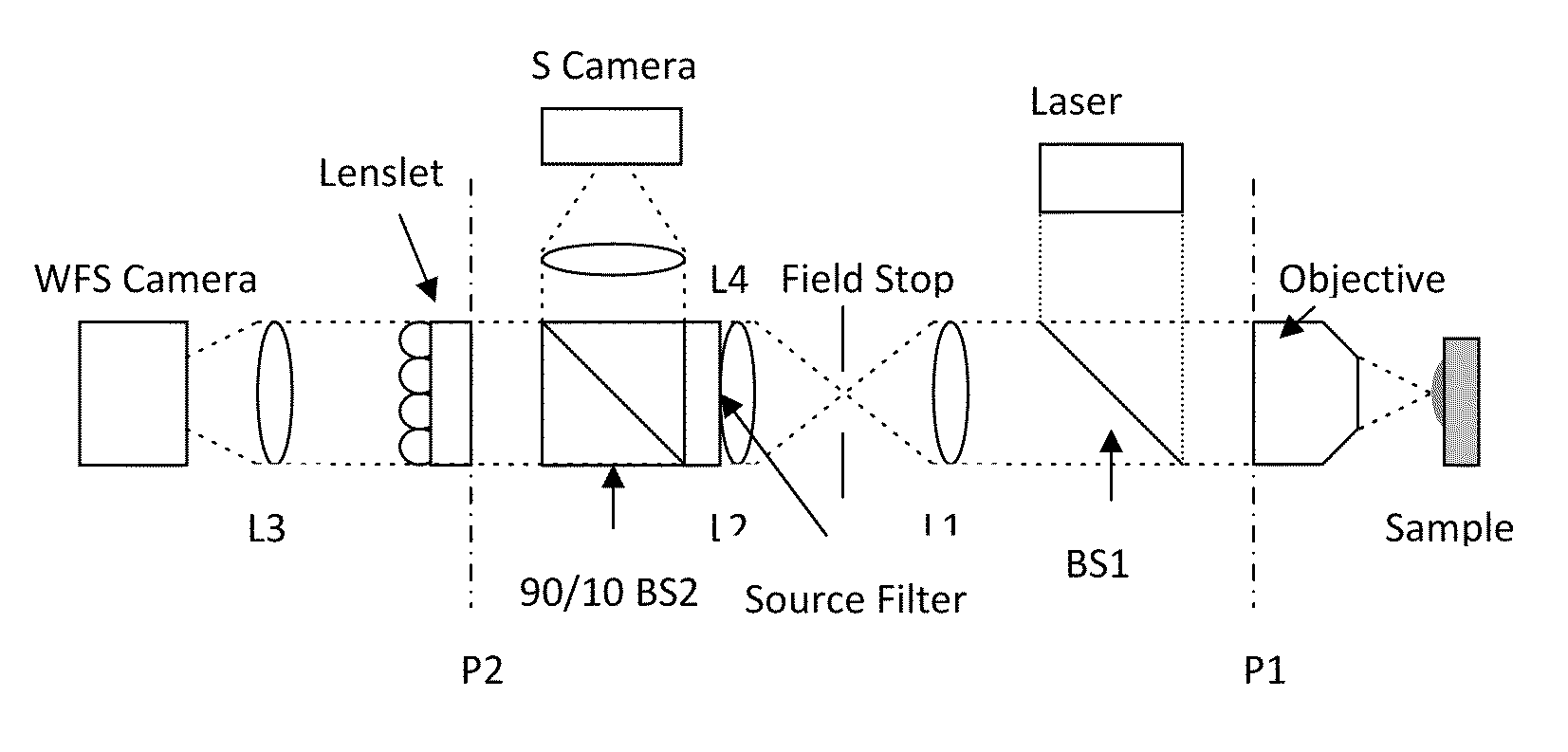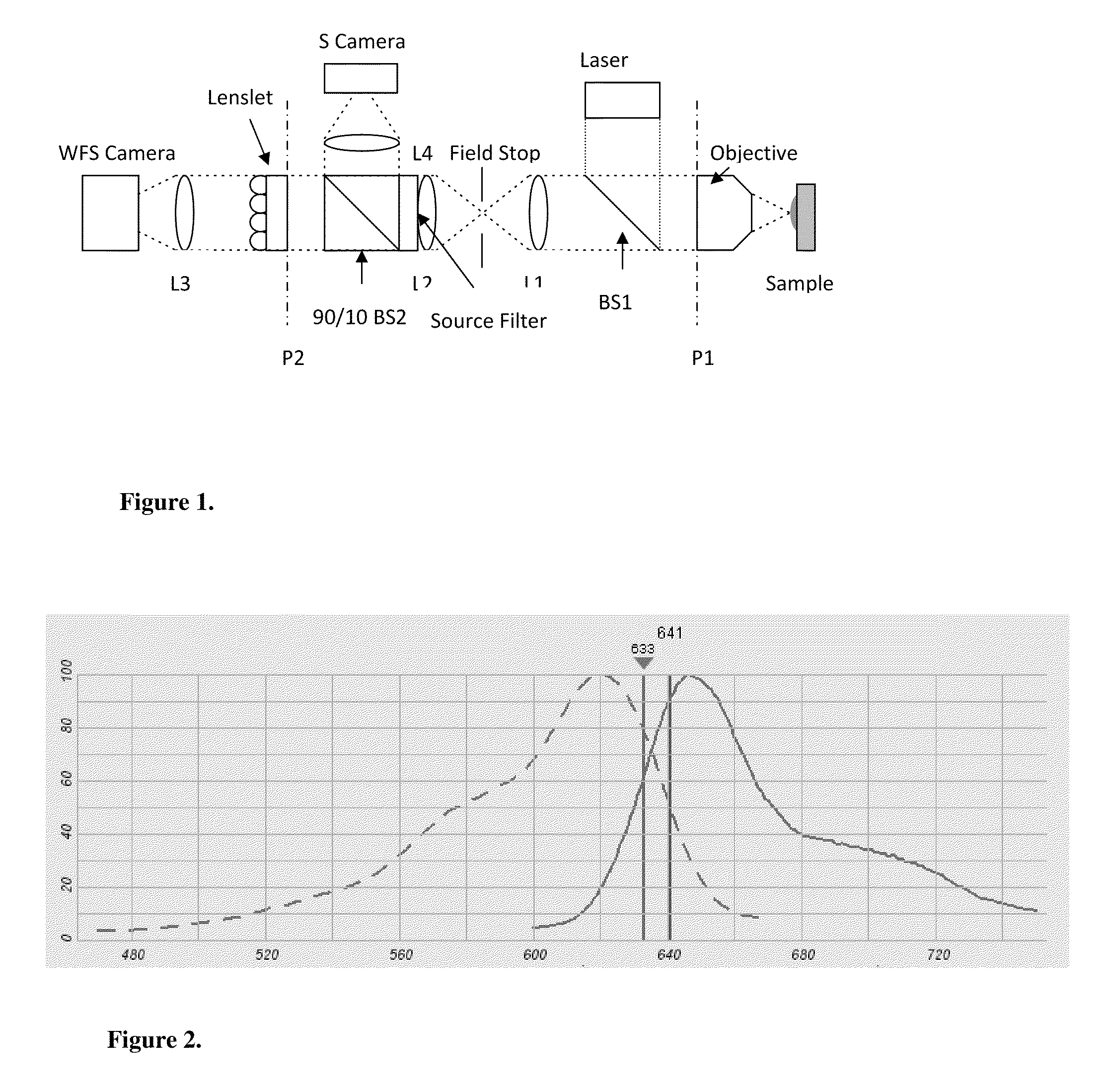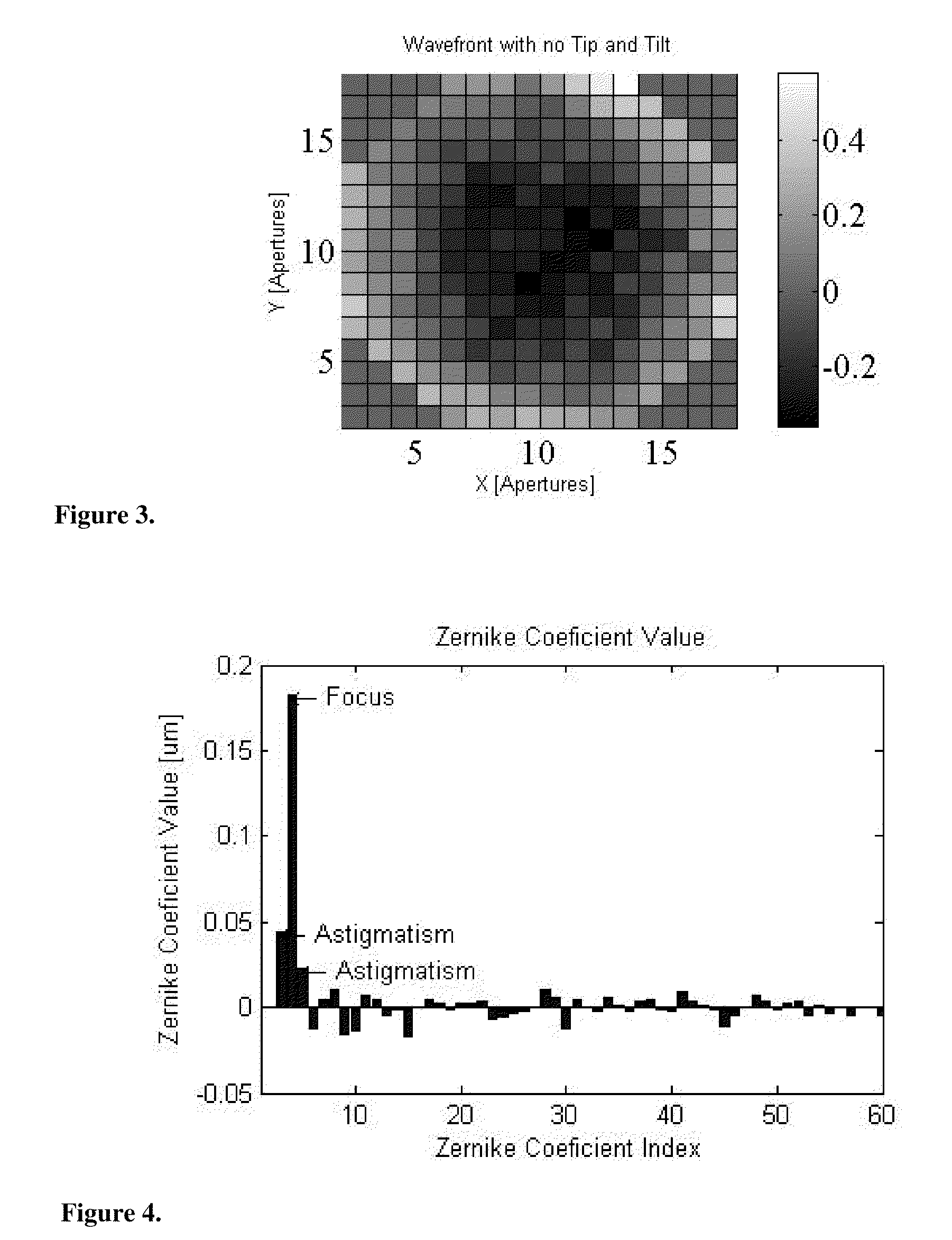Use of a reference source with adaptive optics in biological microscopy
a reference source and optics technology, applied in the field of microscopic imaging, can solve problems such as general accuracy, and achieve the effect of improving the strehl ratio of microscopy
- Summary
- Abstract
- Description
- Claims
- Application Information
AI Technical Summary
Benefits of technology
Problems solved by technology
Method used
Image
Examples
Embodiment Construction
[0021]Described are methods of microscopic imaging of biological tissue using adaptive optics technology to improve the image focus and sharpness. Wavefront measurements are taken by using a novel method of seeding biological tissue by using a fluorescent microsphere as a “guide star” as a natural point-source reference. The current methods are capable of improving the Strehl ratio of modern biological microscopes as much as 15 times.
[0022]The invention encompasses methods for measuring aberrations introduced during optical imaging through biological tissue and using adaptive optics technology to improve the Strehl ratio of microscopes when imaging biological tissue. The methods comprise seeding a medium with a reference source, applying a biological tissue to the seeded medium, subjecting the biological tissue on the seeded medium to adaptive optics microscopy, and determining the aberrations in light wavelength caused by imaging through the biological tissue. In one aspect of the ...
PUM
| Property | Measurement | Unit |
|---|---|---|
| wavelengths | aaaaa | aaaaa |
| diameter | aaaaa | aaaaa |
| half-width | aaaaa | aaaaa |
Abstract
Description
Claims
Application Information
 Login to View More
Login to View More - R&D
- Intellectual Property
- Life Sciences
- Materials
- Tech Scout
- Unparalleled Data Quality
- Higher Quality Content
- 60% Fewer Hallucinations
Browse by: Latest US Patents, China's latest patents, Technical Efficacy Thesaurus, Application Domain, Technology Topic, Popular Technical Reports.
© 2025 PatSnap. All rights reserved.Legal|Privacy policy|Modern Slavery Act Transparency Statement|Sitemap|About US| Contact US: help@patsnap.com



